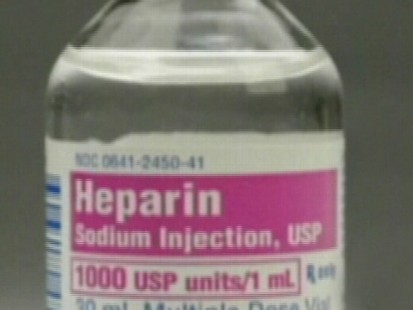

tell your doctor and pharmacist if you are allergic to heparin, any other medications, beef products,pork products, or any of the ingredients in heparin injection.If you will be injecting heparin yourself, be sure you know how much medication you should use. Your doctor may increase or decrease your dose during your heparin treatment. If the strength of heparin is not correct do not use the heparin and call your doctor or pharmacist right away. Before giving an injection of heparin, check the package label to make sure it is the strength of heparin solution that your doctor prescribed for you. Heparin solution comes in different strengths, and using the wrong strength may cause serious problems. Do not use more or less of it or use it more often than prescribed by your doctor.

If you will be injecting heparin yourself, follow the directions on your prescription label carefully, and ask your doctor or pharmacist to explain any part you do not understand.

Ask your doctor, nurse, or pharmacist if you do not understand these directions or have any questions about where on your body you should inject heparin, how to give the injection, or how to dispose of used needles and syringes after you inject the medication. If you will be injecting heparin yourself, a healthcare provider will show you how to inject the medication. Heparin may be given to you by a nurse or other healthcare provider, or you may be told to inject the medication by yourself at home. When heparin is used to prevent blood clots from forming in intravenous catheters, it is usually used when the catheter is first put in place, and every time that blood is drawn out of the catheter or medication is given through the catheter. Heparin is sometimes injected one to six times a day and sometimes given as a slow, continuous injection into the vein.

Heparin should not be injected into a muscle. Heparin comes as a solution (liquid) to be injected intravenously (into a vein) or deeply under the skin and as a dilute (less concentrated) solution to be injected into intravenous catheters.


 0 kommentar(er)
0 kommentar(er)
